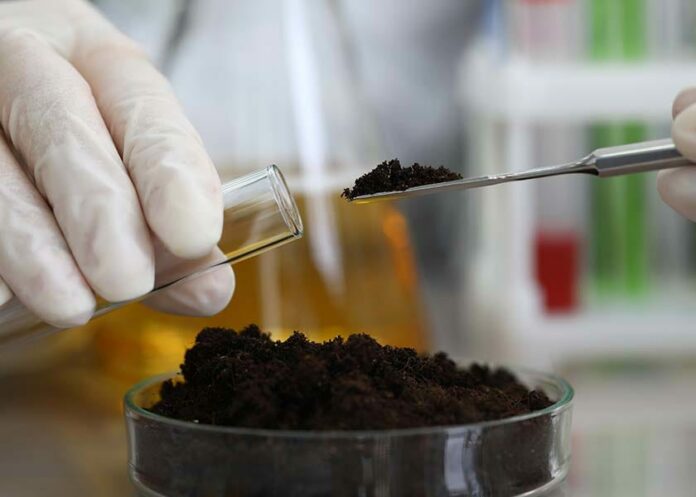A 2023 paper1 published in PLOS Biology extolled the virtues of streptothricin F, a long-forgotten antibiotic researchers believe is effective against gram-negative bacteria. Gram-negative bacteria are behind the growth of antibiotic resistance, which has become a major public health threat worldwide.
The primary cause for this man-made epidemic is the misuse of antibiotics.2 Antibiotic-resistant bacteria are a significant threat to those who acquire sepsis, a life-threatening condition that’s triggered by a systemic infection and ultimately affects the function of your vital organs. Sepsis is sometimes called blood poisoning, and according to Sepsis Alliance, “is one of the most significant health complications that can result from antimicrobial resistance.”3
It is important to note4 that more than 1.5 million people in the U.S. get sepsis each year and at least 350,000 die from it. As many as half of all patients who died in the hospital have sepsis, which is among the most expensive conditions to treat. As the researchers of the featured study note:5
“… high-throughput screening efforts to identify novel antimicrobials using synthetic chemical libraries with rare exceptions have been nonproductive. As a result, there is a significant antimicrobial discovery void.
Moreover, there is little doubt that resistance will emerge to agents currently in the pipeline. We are therefore clearly in need of several new gram-negative agents that are unique in terms of antimicrobial class and potential vulnerabilities, and which can diversify our antimicrobial therapeutic portfolio.”
Soil-Dwelling Bacteria May Fill Antimicrobial Discovery Void
Recognizing the rapid emergence of antimicrobial resistance and the dearth of new discoveries in the field, a collaborative group of researchers from several medical facilities including Harvard University, Beth Israel Deaconess, Case Western and Northeastern University began exploring the potential streptothricin F has against gram-negative bacteria.6
The antibiotic was isolated for the first time in the 1940s7 when the potential against gram-negative bacteria was recognized. Despite its potential, research was halted when an initial study determined it was too toxic on human kidneys. In 2017,8 the World Health Organization published a list of pathogens they considered of the highest priority that were antibiotic-resistant and posed the greatest threat to mankind.
The majority on that list were gram-negative bacterial pathogens that are responsible for considerable morbidity and mortality worldwide. “Now with the emergence of multidrug-resistant pathogens, for which there are few if any active antibiotics available for treatment, it is time to revisit and explore the potential of what we have previously overlooked,” pathologist James Kirby from Harvard University told ScienceAlert in May.9
The form of the antibiotic studied was Nourseothricin, which is created by gram-positive soil bacteria. The product is a mixture of antibiotics, including streptothricin F and streptothricin D. Nourseothricin and streptothricin D both demonstrated toxic effects on kidney cells in a petri dish. However, fractionated streptothricin F was not toxic in the lab or animals. Additionally, it remained highly effective at killing gram-negative bacteria that have proven antibiotic-resistant.
The researchers have not identified the mechanism that streptothricin F uses but the antibiotic appears to bind with the bacteria and cause dysfunction in a way that is different from other antibiotics. The team hopes to be able to figure out the mechanism to help develop medications that will kill highly resistant gram-negative bacteria, also known as superbugs. The researchers wrote:10
“In summary, we present data for compelling bactericidal activity of S-F against contemporary multidrug-resistant CRE and A. baumannii pathogens with in vivo confirmation of efficacy against an emblem of gram-negative antibiotic resistance.
We therefore believe that further early-stage exploration of the historic scaffold is warranted with the ultimate goal of identification of analogs with potential for therapeutic development.”
Antibiotic Resistance on the Rise
While excess human exposure to antibiotics from prescriptions for viral infections is problematic, agricultural use is higher. In 2011, Food Safety News reported that agricultural antibiotic use accounted for 80% of all antibiotics used in the U.S.11 In 2023, a paper published in Nature12 behind a paywall strongly suggests that despite known risks of antibiotic resistance, use in animal farming is expected to grow by 8% from 2020 to 2030. The paper explains:
“Overuse of antibiotics in agriculture is thought to be a major driver of the rise in humans of bacterial infections that cannot be treated with antibiotics. Although antibiotics can be necessary to treat infections in livestock, they are often used to speed up animal growth and prevent diseases among animals in crowded, unsanitary conditions.”
Use in animal farming ultimately affects those who eat the meat from animals raised in concentrated animal feeding operations (CAFOs). The danger in using antibiotics with livestock is that it changes their gut microbiome, which is in part how the drug promotes unnatural growth in the animal. However, some bacteria become antibiotic-resistant and are then passed into the environment through manure or contaminated meat during slaughter and processing.
In 2013,13 the CDC published the first Antibiotic Resistant Threats Report to highlight the danger of antimicrobial resistance and underscore the threat to human health. The 2022 report found much of the progress had been lost, in large part due to the overuse of antibiotics during the COVID-19 viral pandemic.
While the overall problem of antibiotic resistance must be addressed through public health policy, we can make choices that influence our personal risk. You can lower your risk of contracting or spreading drug-resistant infections using the following strategies.
-
Practice prevention by strengthening your immune system — Foundational strategies include avoiding sugars, processed foods and grains, reducing stress in your life and optimizing your sleep and vitamin D level. Adding in traditionally fermented and cultured foods helps optimize your microbiome. Properly wash your hands with warm water and plain soap, to prevent the spread of bacteria.
-
Limit your exposure to antibiotics — Antibiotics do not work for viral infections. Avoid antibiotics in food by purchasing organic or biodynamic grass fed meats and animal products and organically grown fruits and vegetables. Avoid antibacterial soaps, hand sanitizers and wipes, as these promote antibiotic resistance by allowing the strongest bacteria to survive and thrive in your home.
-
Take common sense precautions in the kitchen — Kitchens are notorious breeding grounds for disease-causing bacteria. To avoid cross-contamination, adhere to the following recommendations:
-
Use a designated cutting board, preferably wood, not plastic, for raw meat and poultry, and never use this board for other food preparation. Color coding your cutting boards is a simple way to distinguish between them.
-
Sanitize your cutting board with hot water and detergent. For an inexpensive, safe and effective kitchen counter and cutting board sanitizer, use 3% hydrogen peroxide and vinegar. Keep each liquid in a separate spray bottle, and then spray the surface with one, followed by the other, and wipe off.
-
Coconut oil can also be used to clean, treat and sanitize your wooden cutting boards. It’s loaded with lauric acid with potent antimicrobial actions. The fats will also help condition the wood.
-
Biosolids Also Increase the Risk of Antibiotic Resistance
Biosolids is the PR name for sewage sludge that is used as fertilizer for your food. Sewage sludge is the residue generated during the treatment of domestic waste and contains a cocktail of hazardous substances including those from industry, hospitals and humans — in other words, anything that is discharged into the sewer system.
Additionally, the application of massive amounts of biosolids containing nitrogen-rich fertilizers has contributed to the growing algae blooms along the U.S. coastlines. Environmental destruction harms human and animal life as well as destroying water quality.
In 2018, the U.S. Office of Inspector General14 released a scathing indictment of the EPA’s lack of regulation over the biosolid industry, having found unregulated pollutants including pharmaceuticals, steroids, hormones and flame retardants. PFAS and PFOA, alongside 352 other pollutants with incomplete risk assessments and 35 EPA priority pollutants.
It should surprise no one who reads my newsletter that using sewage sludge to grow food increases the already pressing problem of antibiotic resistance. The over-prescription of antibiotics to humans and livestock has created superbugs that kill thousands each year. The combination of human waste — which contains both antibiotics, pathogens and antibiotic-resistant pathogens — with hospital and industrial waste only worsens the deadly problem.
Broccoli May Hold One Key to Antibiotic Resistance
Cruciferous vegetables have long been cherished for their health benefits. Broccoli, cabbage, collards, Brussels sprouts, cauliflower, kale and bok choy, just to name a few, contain several plant compounds that are important for optimal health, including powerful chemoprotective compounds.
One of the most well-known of these is sulforaphane, an organic sulfur. Another important phytochemical found in cruciferous veggies is indole-3 carbinol (I3C),15 which is converted in your gut to diindolylmethane (DIM). DIM in turn boosts immune function. Interestingly, researchers now believe that DIM may be a potent weapon against antibiotic-resistant pathogens as well.16
Many pathogens have also developed resistance to more than one drug, so-called pan-resistance, which makes treating them even more problematic. And, while pan-resistant superbugs are increasing, the development of new antibiotics to tackle them has come to a near halt.
Four pathogenic gram-negative bacteria were studied17 — Pseudomonas aeruginosa, Acinetobacter baumannii, Serratia marcescens and Providencia stuartii — and in the initial investigation, DIM reduced biofilm formation in all four by as much as 80%.
Of these, Pseudomonas aeruginosa and Acinetobacter baumannii are both resistant to multiple drugs, so in follow-up tests they focused on these two specifically. As previously noted, DIM was able to inhibit biofilm formation in these bacteria by 65% to 70%. When DIM was combined with the antibiotic tobramycin, biofilm growth of P. aeruginosa was diminished by 98%.
Just as with high-dose vitamin C, which is another potent weapon to treat infections — especially when administered by IV — I don’t believe that DIM should be used every day as a prophylactic to prevent infections. It should be used only when needed to treat antibiotic-resistant infections as it will likely do so without any of the side effects of potent antibacterials.
Source: Source link
Publish Date:

